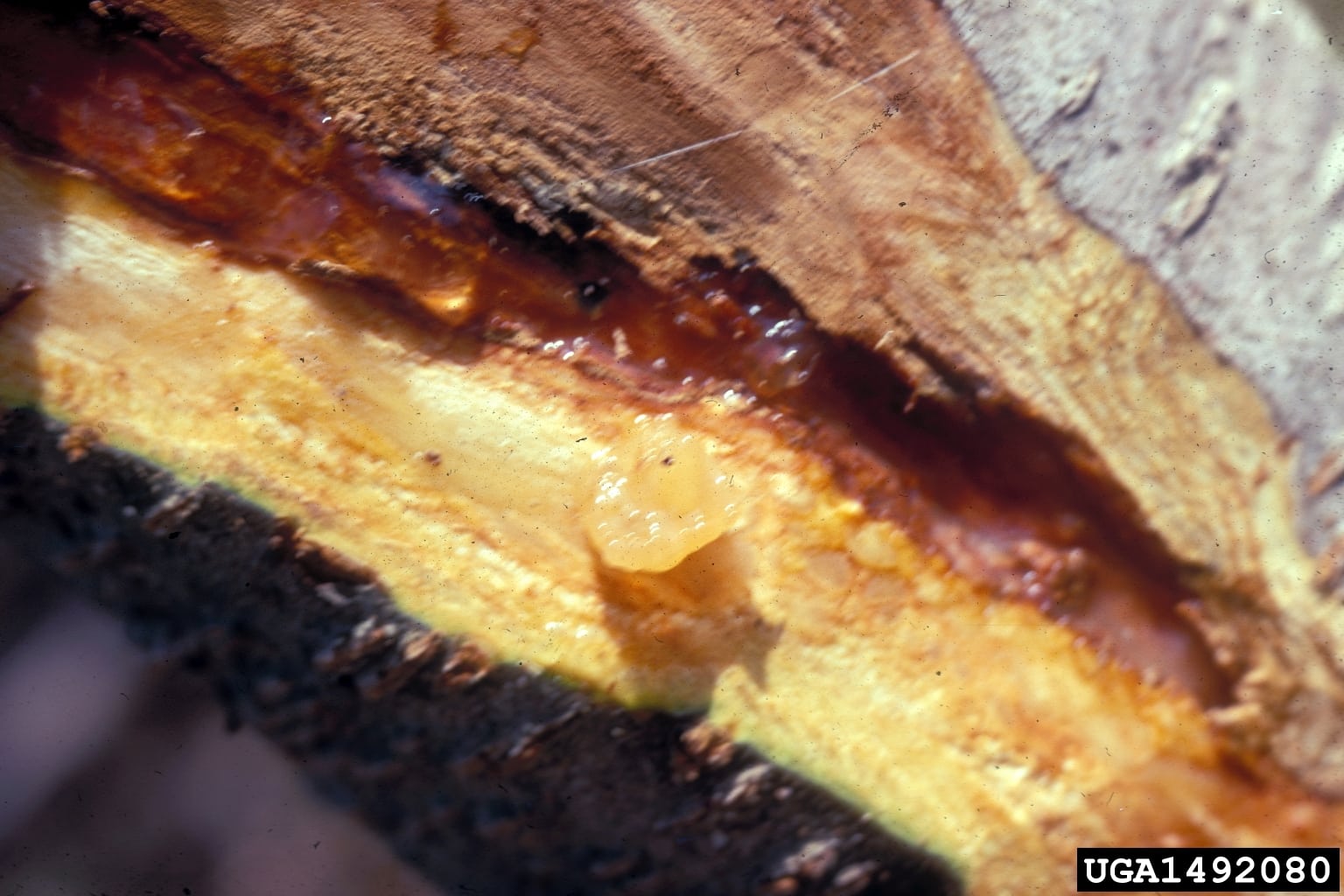Peach Bacterial Canker Control: How To Treat Bacterial Canker On Peach Trees


Stone fruit diseases can wreak havoc on a crop. This is especially true with bacterial canker on peach trees. Bacterial canker symptoms can be difficult to catch in time as trees may leaf out and fruit normally initially. The disease primarily affects trees that are up to seven years of age. Treating peach bacterial canker relies upon good culture and minimizing any injury to trees. Continue reading to find out what causes peach bacterial canker and how to keep your peach tree healthy.
Bacterial Canker Symptoms
Peach bacterial canker is associated with a syndrome called Peach Tree Short Life. With a name like that, it is evident what the ultimate outcome is without adequate peach bacterial canker control. It is a slow death that results in an unhealthy tree with little to no fruit and an untimely demise. It can be hard to initially recognize bacterial canker on peach trees. By the time your eyes can see the signs, the tree is likely in great distress. The bacteria causes the most damage when trees are dormant or unhealthy for other reasons. Just at leaf break, cankers form on stem and trunk tissue. These develop copious amounts of gum that eventually breaks through the plant matter. The result is a sticky, smelly, cancerous lesion. Prior to this, the plant may experience tip die back and some leaf distortion. Once the canker is filled with the gum, any plant material beyond it will die.
What Causes Peach Bacterial Canker?
The pathogen is the bacterium Pseudomonas syringae, but its effects rely upon conditional and cultural situations. The disease progresses rapidly in rainy, cool weather and is dispersed by windy conditions. Any small injury in a plant can invite the introduction of the disease. Freeze damage and winter injury are the most frequent ways the pathogen gets into the tree. The disease development stops during warm periods, however, the bacteria overwinters in buds, margins of cankers, and the tree itself. The following spring brings forth more growth of the disease and potential spread.
Peach Bacterial Canker Control
Good cultural conditions can prevent much of the damage from this disease. At planting, select sites that are well draining and use rootstocks that are resistant to the pathogen. Keeping the tree healthy with suggested peach fertilizing, minimizing other disease and pest issues, and proper pruning techniques can also diminish the effects of the disease. Sanitary practices on all tools used can reduce the transfer of the bacteria from tree to tree. Some growers suggest treating peach bacterial canker by pruning in January or February. Remove at least 12 inches (31 cm.) below cankers and dispose of the infected tree material. Another suggestion is an application of copper fungicide just at leaf drop, but this seems to have minimal effect.
Gardening tips, videos, info and more delivered right to your inbox!
Sign up for the Gardening Know How newsletter today and receive a free copy of our e-book "How to Grow Delicious Tomatoes".

Bonnie Grant is a professional landscaper with a Certification in Urban Gardening. She has been gardening and writing for 15 years. A former professional chef, she has a passion for edible landscaping.
-
 Creative Ideas For Plant Containers: 7 Ways To Save Money And Add Charm To A Garden
Creative Ideas For Plant Containers: 7 Ways To Save Money And Add Charm To A GardenIf you are looking for great ways to add personality to your container gardening – and even save yourself some money – then try these creative ideas for plant containers
By Mary Ellen Ellis
-
 How To Make A Bouquet Garni Or Herb Bundle For Cooking
How To Make A Bouquet Garni Or Herb Bundle For CookingIf you’re a great cook, you may have made an herb bundle before. If this is a new idea, learn how to add sparkle and interest to your dish with a bouquet garni.
By Amy Grant